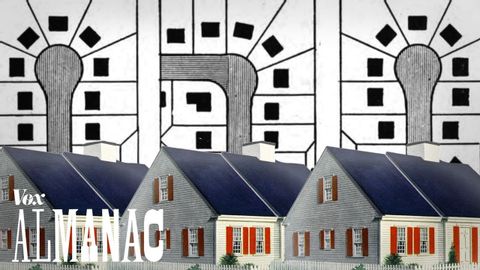为什么这么多郊区看起来都一样(Why so many suburbs look the same)
joey joey 發佈於 2021 年 05 月 18 日  沒有此條件下的單字
沒有此條件下的單字US /ˈɛpɪˌsod/
・
UK /'epɪsəʊd/
- n.插曲;集;(電視或廣播節目的)一集;事件;一段時期;(疾病的)發作
US /ˈfɪzɪkəl/
・
UK /ˈfɪzɪkl/
- n. (c.)身體檢查
- adj.身體的;肉體的;物質的;物理的
- n.體育
US /ˈspɛktrəm/
・
UK /'spektrəm/
- n.光譜 ; 波譜;(看法、感覺等的)範圍,各層次

